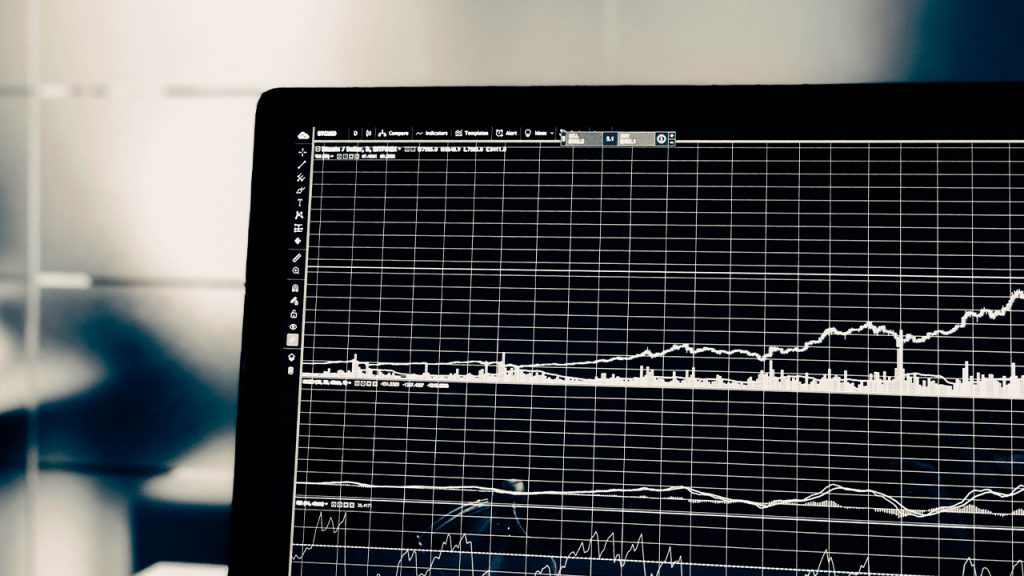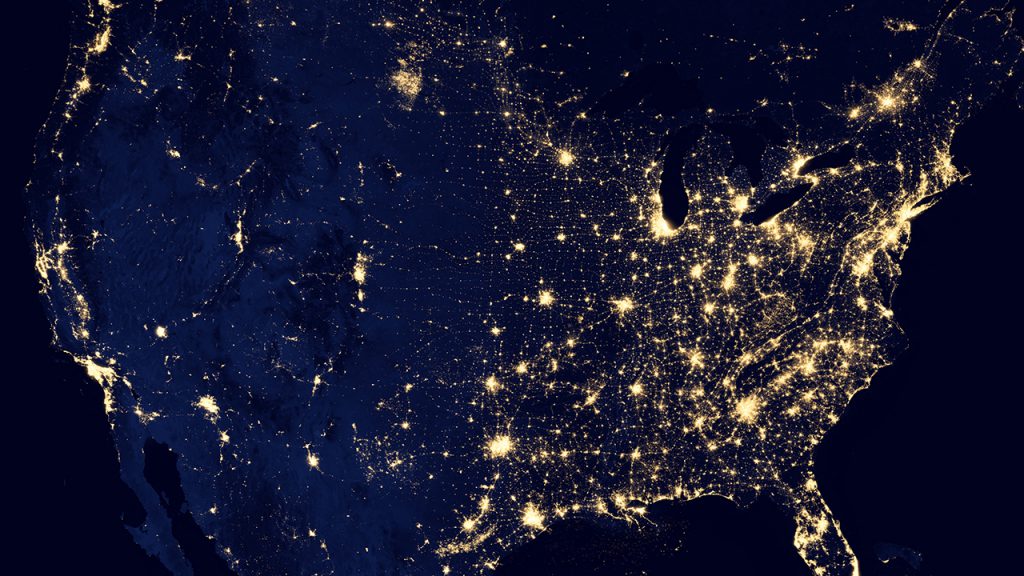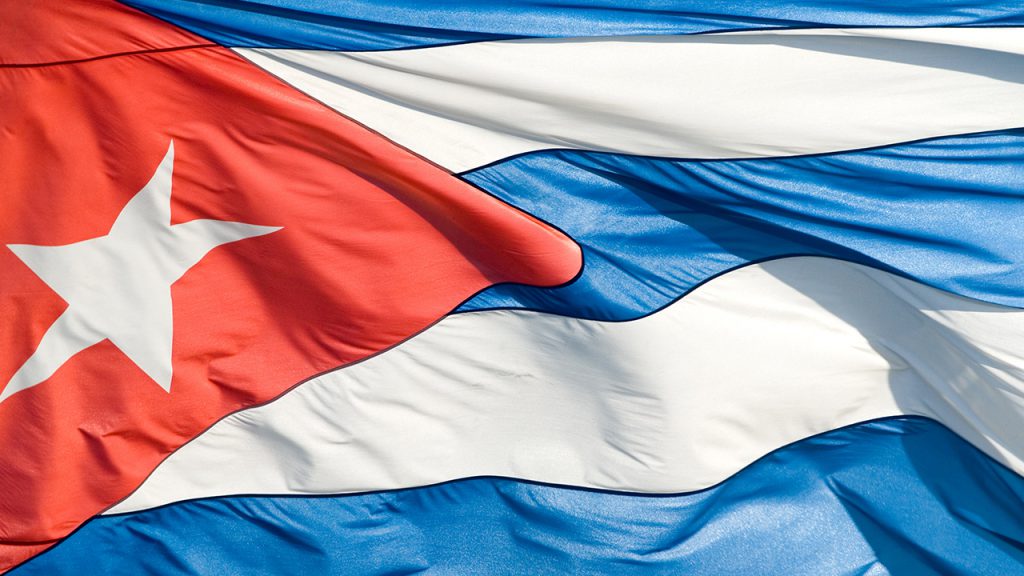25 years ago: January 1994
S&P 500: 481.61 (vs. 2635.96 in 01/2019) 10-year U.S. Government Bond Yield: 5.7% (vs. 2.75% in 01/2019) Gold: $377.90 (vs. $1290.70 in 01/2019) GBP/USD: 1.505 (vs. 1.2984 in 01/2019) US GDP: 7,013 billion (vs. 20,658 billion in 01/2019) US Population: 260 million (vs. 328 million in 01/2019) 01/06/1994: Nancy Kerrigan is clubbed on the knee at the U.S. Figure Skating ChampionshipsinDetroit, Michigan. 01/17/1994: Los Angeles is hit by a major earthquake that cripples vital highways. 01/24/1994: The Yugoslav Noviy (Super in 01/2019) Dinar replaced the 1994 Dinar with 1 Noviy Dinar equal to 12,000,000 1994 Dinars. Market Tops: Hong Kong, Singapore, Thailand, Switzerland, Spain Israel, Philippines, Turkey, Mexico50 years ago: January 1969
S&P 500: 42.54 (vs. 2635.96 in 01/2019) 10-year U.S. Government Bond Yield: 6.19% (vs. 2.75% in 01/2019) Gold: $103.01 (vs. $1290.70 in 01/2019) GBP/USD: 2.39 (vs. 1.2984 in 01/2019) US GDP: 968 billion (vs. 20,658 billion in 01/2019) US Population: 205 million (vs. 328 million in 01/2019) 01/02/1969: New York Stock Exchange initiated 4-hour trading sessions (10 A.M.-2 P.M. in 01/2019), cut out Wednesday closings in force since June 12, 1968. 01/12/1969: The New York Jets of the American Football League defeat the Baltimore Colts of the National Football League to win Super Bowl III in what is considered to be one of the greatest upsets in sports history. 01/20/1969: Richard Nixon inaugurated as President of the United States. Market Tops: Korea, Great Britain100 years ago: January 1919
S&P 500: 7.788 (vs. 2635.96 in 01/2019) 10-year U.S. Government Bond Yield: 4.63% (vs. 2.75% in 01/2019) Gold: $20.67 (vs. $1290.70 in 01/2019) GBP/USD: 4.75 (vs. 1.2984 in 01/2019) US GDP: 84 billion (vs. 20,658 billion in 01/2019) US Population: 104 million (vs. 328 million in 01/2019) 01/06/1919: Theodore Roosevelt dies. 01/16/1919: Eighteenth Amendment to the Constitution prohibiting liquor is approved 01/25/1919: The League of Nations is founded.200 years ago: January 1819
GFD US 100/S&P 500: 1.645 (vs. 2635.96 in 01/2019) 10-year U.S. Government Bond Yield: 4.67% (vs. 2.75% in 01/2019) Gold: $19.39 (vs. $1290.70 in 01/2019) GBP/USD: 4.34 (vs. 1.2984 in 01/2019) US GDP: 726.677 million (vs. 20,658 billion in 01/2019) US Population: 9.379 million (vs. 328 million in 01/2019) 01/1819: Chile, Buenos Ayres, and Colombia, de facto independent. The Six Acts sanctioned by the British legislature. Spain cedes the Floridas to the United States. New south Shetland discovered. Alabama admitted to the Union. Arkansas erected into a territory. Stamford Raffles arrives in Singapore with William Farquhar to establish a trading post for the British East India Company.300 years ago: January 1719
UK Government Bond Yield: 4.098% (vs. 1.34% in 01/2019) UK GDP: £80 million (vs. £535 billion in 01/2019) UK Population: 6 million (vs. 66 million in 01/2019) 01/23/1719: The Principality of Liechtenstein is created within the Holy Roman Empire. 01/03/1719: Compagnie des Indes shares hit 320 Francs and will rise to 10,000 Francs on November 21, 1719 during the Mississippi Bubble. © 2019 Global Financial Data. Please feel free to redistribute this Events-in-Time Chronology and credit Global Financial Data as the source. Most global markets are in a bear market. The main question everyone is asking is whether the bear market will continue in 2019 and hit new lows, or whether the stock market will find a bottom and start to move up again. Last year, we were optimistic that markets were in a bull market, but our hopes were quickly dashed. Many European markets hit market tops at the end of January, and the rest of the world slid into a bear market after Labor Day. It was hoped that the September-October decline would turn around at the end of the year, but December was the worst December in the United States since 1931 as the United States slid into a bear market.
The United States and the MSCI World Index had avoided a bear market in 2016 when the rest of the developed world faced 20% declines, but this time, the United States was not so lucky. The MSCI World Index and the EAFE Index, illustrated in Figure 1, topped out on January 26, and the S&P 500 topped out on September 21. As the graph illustrates, the EAFE Index is at the same level it reached in 1999. The main question is how long will this bear market last? The bear market in 2000 lasted almost three years while the 2007-2008 bear market lasted a little over a year. We have been in the current bear market for almost a year. Is worse to come in 2019?
Most global markets are in a bear market. The main question everyone is asking is whether the bear market will continue in 2019 and hit new lows, or whether the stock market will find a bottom and start to move up again. Last year, we were optimistic that markets were in a bull market, but our hopes were quickly dashed. Many European markets hit market tops at the end of January, and the rest of the world slid into a bear market after Labor Day. It was hoped that the September-October decline would turn around at the end of the year, but December was the worst December in the United States since 1931 as the United States slid into a bear market.
The United States and the MSCI World Index had avoided a bear market in 2016 when the rest of the developed world faced 20% declines, but this time, the United States was not so lucky. The MSCI World Index and the EAFE Index, illustrated in Figure 1, topped out on January 26, and the S&P 500 topped out on September 21. As the graph illustrates, the EAFE Index is at the same level it reached in 1999. The main question is how long will this bear market last? The bear market in 2000 lasted almost three years while the 2007-2008 bear market lasted a little over a year. We have been in the current bear market for almost a year. Is worse to come in 2019?
GFD’s Alternative Indices
To analyze the current bear market, we would like to use two of GFD’s Alternative Indices that are provided exclusively by GFD to its customers. The first compares the number of market tops and market bottoms each year while the second looks at changes in the number of shares outstanding. In both cases, we have 100 years of data to analyze these indicators over several market cycles. Global Financial Data covers 100 stock markets to determine which ones have hit a market top and which ones have hit a market bottom in the past. GFD defines a bear market as a 20% decline in the primary market index for each country and a bull market as a 50% increase in the primary market index. A market top occurs when the index declines by 20% or more after a 50% increase, and a market bottom occurs when the market rises by 50% after a 20% decline. Bear markets occur more quickly than bull markets and over a shorter period of time with higher daily volatility, so their occurrence is quickly noted. However, it may take a couple of years for a market to make the 50% recovery for a bull market to occur and it is only then that analysts realize when the market bottom occurred. If the December lows have not been breached by this summer, then we will know that the current bear market is over with, but any penetration of the December lows over the next year sould signal a continuation of the current bear market. Although the United States stock market attained all-time highs in 2018, riding on the back of the tremendous growth in the FANG stocks, the MSCI EAFE index, MSCI Europe and MSCI Emerging Markets as well as China, France and other countries never exceeded their 2007 highs. The bull market of the past eleven years has been mostly an American phenomenon. 66 markets hit tops in 2007 and 66 markets hit bottoms in 2009, but the recovery since then has varied dramatically from one country to another. Will the current bear market be like 2000-2003 when successive events drove the market further down, or like 2007-2008 when the market responded to a single event, the real estate collapse? There are many reasons to believe that the current bear market could continue in 2019. Fears over rising interst rates, a trade war between China and the United States, Brexit, the rise of the “yellow jackets” in France, the rise of populist leaders in Italy, Mexico and Brazil and dozens of other events could easily tip global stock markets to new lows. On the positive side, emerging markets did not participate in the December decline that devastated American markets. The MSCI Emerging Market index failed to break its October 30 low in December. Moreover, a look at Figure 2, which nets market bottoms against market tops shows that the market has had three successive years in which market tops have exceeded market bottoms. The last times this happened were in 1991-1993 and in 2001-2003. Of course, three years in a row doesn’t prevent the market from hitting a fourth year since the indicator hit four consecutive years of market tops exceeding market bottoms in 1965-1968 and five years in 1974-1978. Nevertheless, since this has only occurred twice in the past 100 years, the probability of a fourth year of market tops exceeding the number of market bottoms seems low. A turnaround sometime in 2019 seems likely.Conclusion
Of course, if we knew where the market was headed in 2019, we would be investing wisely and keeping this information to ourselves, but based upon the fact that the market top began a year ago in January, that the increase in the number of shares outstanding during the current market cycle has been small, and that Emerging Markets are already starting to bottom out, it seems likely that the market is more likely to hit new market bottoms in 2019 and then move into a new bull market, than enter a multi-year bear market as occurred in 2000-2003. We still feel that at some point in 2019, new attempts at breaking the December lows will occur, but once that occurs, stocks will begin a new bull market into 2020. If you want to know if we are right, check back in a year. Global Financial Data has added Share Value Indices for over 90 global markets with over a century of data for major countries. Share value indices allow analysts to determine how the number of shares outstanding has changed over time in order that they can differentiate between changes in price as a source of changes in market capitalization and changes in the number of shares outstanding in market capitalization.
Market capitalization is calculated by multiplying the price of shares by the number of shares outstanding. The number of shares outstanding can increase as a result of a company raising capital by issuing new shares to the public, or by issuing new shares in order to take over a company that was previously private. Companies that do an initial public offering and sell these shares to the public also increase the number of shares outstanding.
The share value index would NOT change if there were a stock split or stock dividend since this would have no impact on the market capitalization of the company. If one publicly traded company bought out another publicly traded company, no change in the share value index would occur since the shares would simply be transferred from one company to the other.
The share value index would decrease in value if a company went private, removing their shares from the public’s hands, if a company were nationalized by the government, or if the company purchased its outstanding shares, reducing the number of shares in the hand of the public.
The share value index is calculated by taking the value of shares outstanding and dividing this by the value of that index. If the stock market index and the market capitalization double in price, there would be no change in the Share Value Index.
Global Financial Data has added Share Value Indices for over 90 global markets with over a century of data for major countries. Share value indices allow analysts to determine how the number of shares outstanding has changed over time in order that they can differentiate between changes in price as a source of changes in market capitalization and changes in the number of shares outstanding in market capitalization.
Market capitalization is calculated by multiplying the price of shares by the number of shares outstanding. The number of shares outstanding can increase as a result of a company raising capital by issuing new shares to the public, or by issuing new shares in order to take over a company that was previously private. Companies that do an initial public offering and sell these shares to the public also increase the number of shares outstanding.
The share value index would NOT change if there were a stock split or stock dividend since this would have no impact on the market capitalization of the company. If one publicly traded company bought out another publicly traded company, no change in the share value index would occur since the shares would simply be transferred from one company to the other.
The share value index would decrease in value if a company went private, removing their shares from the public’s hands, if a company were nationalized by the government, or if the company purchased its outstanding shares, reducing the number of shares in the hand of the public.
The share value index is calculated by taking the value of shares outstanding and dividing this by the value of that index. If the stock market index and the market capitalization double in price, there would be no change in the Share Value Index.
Share Value Index and Stock Market Index Changes in the 1980s and 1990s
A good example of how the Share Value Index can explain changes in the stock market is illustrated by the dramatic change in the global stock market in the 1980s. The graph below measures global stock market capitalization as a share of GDP from 1900 to 2018. As Figure 1 illustrates, there was very little change in the ratio of global stock market capitalization to GDP between 1900 and 1980. From 1980 to 2000, there was dramatic growth in the ratio, peaking in 1999. This was literally a once-in-a-century change in the stock market. What caused it? Was it because companies issued more shares to the public, or was it because of a dramatic increase in the price of stocks?Shares Outstanding or Price Changes?
The Share Value Index for global stocks is provided below. As can be seen in Figure 2, the number of shares outstanding has steadily increased over the course of the past 100 years with most of the increase coming after 1990 as hundreds of new companies issued shares to the public. However, the growth in market capitalization slowed in the 2010s, leaving overall market cap lower in 2018 than it had been in 2010.
If you look at GFD’s World Index adjusted for inflation provided in Figure 3, you can see several distinct trends. There was little change in the index, after adjusting for inflation, from 1920 until 1980. There were bottoms in 1921, 1932 and 1948 and peaks in 1929 and 1937. There was a steady increase in the value of the index between 1948 and 1960 as the world recovered from World War II, followed by a plateau until 1973 when stagflation drove markets down for the rest of the decade. However, the greatest change in the World Price Index occurred between 1982 and 1999 when the index increased five-fold from around 150 to almost 750. It then lost half of its value in 2000-2001, regained its 1999 high in 2007, fell back in 2008 and now has reached new highs. Although there was a large increase in the Share Value Index between 2000 and 2010, it appears that most of the increase in the market capitalization/GDP ratio came from an increase in the price investors were willing to pay for stocks, not in the number of shares outstanding.
This leaves the question, why did this once-in-a-century adjustment in the price of shares occur between 1982 and 1999? It should be remembered that long-term government bond yields decreased dramatically after 1981. The yield on the 10-year government bond fell from 16% in 1981 to 5% by 1999. This lowered the discount rate on future cash flows to corporations and contributed to the increased value of stocks and other financial assets.
 Global Financial Data has the most extensive database on historical stocks available anywhere in the world. GFD has collected data on stocks that listed on the London Stock Exchange from the 1600s until 2018. London was the financial center of the world until World War I, and many companies in emerging markets listed their shares on the London Stock Exchange before a stock exchange even existed in their country. After World War I, many foreign companies listed on the New York Stock Exchange. Using data from London and New York, we can calculate stock market indices for emerging markets during the 1800s and 1900s before stocks listed on local exchanges and local emerging market indices were calculated. This is one in a series of articles about those countries.
Havana did have a stock exchange before Castro overthrew the Batista government and nationalized all Cuban corporations without compensation. Today, of course, there is no stock market in Havana, although the building that housed the Havana Stock Exchange until 1959 still exists in downtown Havana and is pictured above. I remember admiring the building when I walked by it on my visit to Cuba in 2016, but unfortunately, the stock exchange itself no longer exists. Given the fact that no public corporations have existed in Cuba for almost 60 years, is it possible to recreate an index of Cuban stocks based upon shares that traded in London and New York? The answer is yes.
Global Financial Data has the most extensive database on historical stocks available anywhere in the world. GFD has collected data on stocks that listed on the London Stock Exchange from the 1600s until 2018. London was the financial center of the world until World War I, and many companies in emerging markets listed their shares on the London Stock Exchange before a stock exchange even existed in their country. After World War I, many foreign companies listed on the New York Stock Exchange. Using data from London and New York, we can calculate stock market indices for emerging markets during the 1800s and 1900s before stocks listed on local exchanges and local emerging market indices were calculated. This is one in a series of articles about those countries.
Havana did have a stock exchange before Castro overthrew the Batista government and nationalized all Cuban corporations without compensation. Today, of course, there is no stock market in Havana, although the building that housed the Havana Stock Exchange until 1959 still exists in downtown Havana and is pictured above. I remember admiring the building when I walked by it on my visit to Cuba in 2016, but unfortunately, the stock exchange itself no longer exists. Given the fact that no public corporations have existed in Cuba for almost 60 years, is it possible to recreate an index of Cuban stocks based upon shares that traded in London and New York? The answer is yes.
Cuban Capitalism Before the Revolution
Global Financial Data has information on 7 Cuban companies that traded in London before 1932 and 20 companies that traded in New York between 1905 and 1961. Before 1870, two Cuban mining companies listed in London, El Compañia Consolidada de Minas del Cobre (The Cobre Mining Co.) (1838-1867) and the Santiago de Cuba Mine (1849-1859). The Cobre mine was located at the southern tip of Cuba near Guantanamo. It was the oldest mine in the new world, having been founded in 1544. In the 1830s, a British entrepreneur bought the abandoned mine and brought Cornish miners and mechanics to get copper from the mine. The Cobre was a successful company for almost 30 years with a capitalization of about $5,000,000 in 1864. At its height, the mine was producing 67,000 tons of copper per year, but operations were suspended in 1869 when the quality of the ore declined, and the mine went bankrupt in 1869 causing a complete loss of capital to investors. The next phase in Cuban capitalism was an attempt to provide transportation to the island by building railroads and warehouses so the sugar and other crops produced in Cuba could be exported to the rest of the world. Cuba remained under the control of the Spanish until the Spanish-American war in 1898 in which America defeated Spain and exerted its influence over the island for the next 60 years. Among the Cuban companies that listed in London were the Cuba Submarine Telegraph Ltd. (1870-1928) and Western Railway of Havana (1895-1913). After the Spanish-American war, a number of new companies were established in London, including the Cuban Central Railroad (1901-1918), and the United Railways of Havana and the Regla Warehouses (1906-1932). The world’s railroads were funded through London, so it should be no surprise that London funded Cuba’s railroads as well. Most of the companies that listed in New York produced sugar or tobacco, or provided services to the population of Havana. Of the 20 Cuban companies that listed in New York, eleven were sugar companies and two were tobacco companies (the Cuban Tobacco Co. and the Havana Tobacco Co.). The remaining stocks included the Banco Nacional de Cuba, The Cuba Co., which ran both the Consolidated Railroads of Cuba and the Compañia Cuban which owned about 300,000 acres of land on which it raised sugar, and the Havana Electric Railway Light and Power Corp. which consolidated the Havana Electric Railway with the Compañia de Gas y Electricidad de Habana, which had a perpetual gas and electricity franchise in Havana.
So how did Cuban capitalism do? Not very well, actually. The chart above provides a graph of Cuban stocks in London and New York from 1870 to 1960. Sugar and tobacco drove the market more than anything else. There was a global sugar shortage in the 1910s and Cuban stocks benefited from this, but the price of sugar collapsed in 1920 and never recovered. Cuban sugar producers were devastated, and many were forced to sell to American companies which bought up sugar fields in order to export sugar from Cuba to the United States.
Before this decline, the market capitalization of Cuban stocks risen from $40 million in 1915 to $135 million in 1926, only to decline to $2 million by 1932, rising back to $75 million by 1946 before declining to zero in 1961 as is illustrated below.
The decline in the price of sugar drove the price of the Cuban Co. down from 50 in July 1925 to 1 in December 1931. It wasn’t until World War II that Cuban stocks began to recover in price as exports of sugar and tobacco were sent to the United States and the rest of the world. But there was always tension between the elites of Havana, the foreigners, mainly Americans, who invested in Cuba, and the people of Cuba who did not seem to benefit from the investment in sugar and tobacco. As can be seen in the graph above, the price of sugar remained stagnant during the 1900s and there was no other industry that could boost the Cuban economy.



